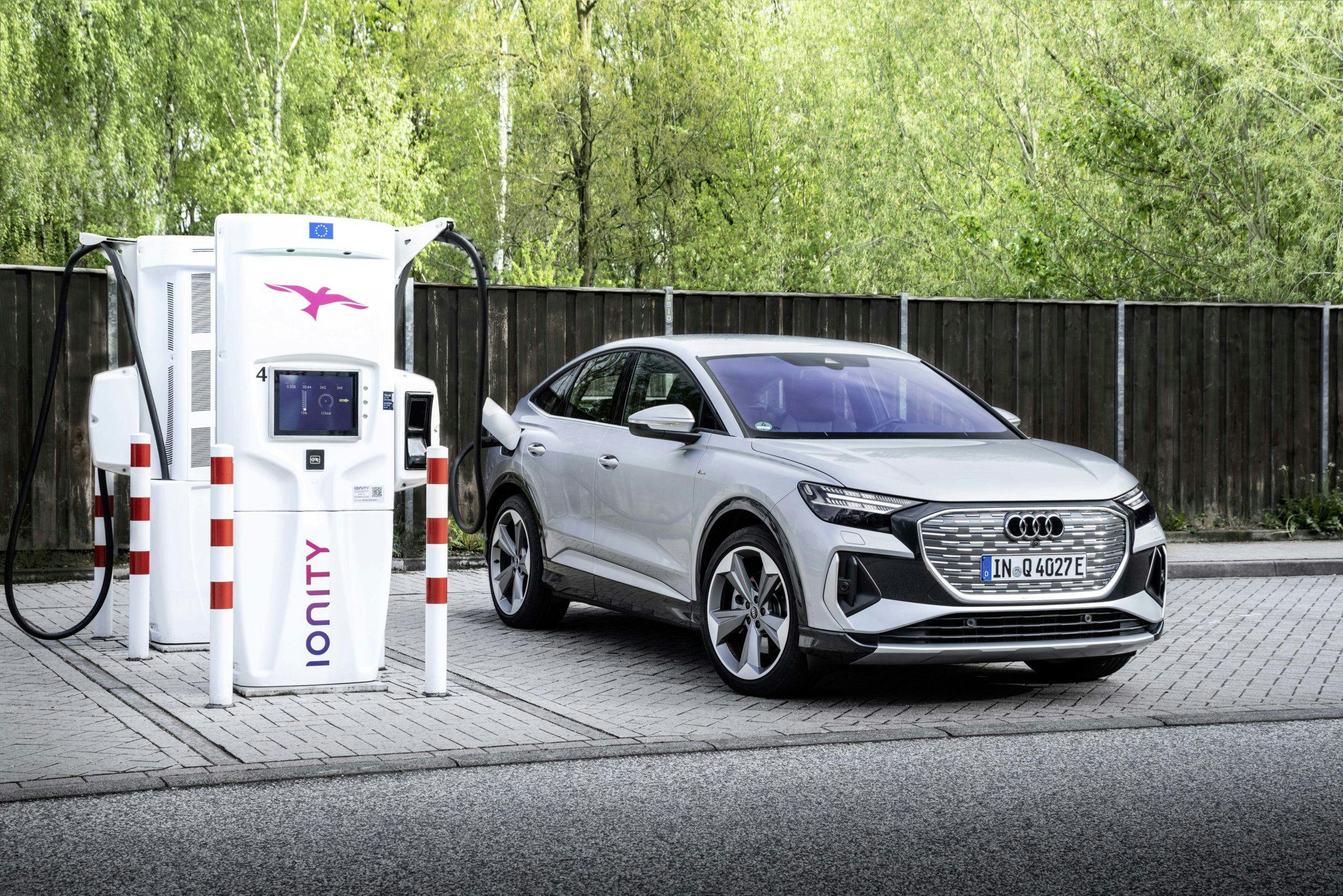At the Climate Neutrality Foundation conference in Berlin, Germany, Audi announced that starting in 2026, it will only launch battery-electric vehicles for the global market. This is part of the brand’s strategy to quickly transition to electrified mobility and gradually phase out its internal combustion engines by 2033. Audi aims to achieve carbon neutrality by 2050.
“Through our innovative strength, we offer individuals sustainable and carbon-neutral mobility options,” said Audi CEO Markus Duesmann. “I don’t believe in the success of bans. I believe in the success of technology and innovation.” However, there is one exception: China. Duesmann notes that internal combustion engines could live on in China past 2033 and intends to keep production there for the local market. Audi launched more EVs than cars powered by internal combustion engines this year with the arrival of the e-tron GT, RS e-tron GT, Q4 e-tron, and Q4 e-tron Sportback. By 2025, Audi intends to have 20 battery-electric models in its lineup “With this road map, we are creating the clarity necessary to make a decisive and powerful transition to the electric age,” said Duesmann. We’re sending the signal that Audi is ready.”
Although production of the internal combustion engine at Audi will end by 2033 for the majority of the global market, it plans to keep improving them. The company aims to continue refining and improving its internal combustion engines until they are finally discontinued. Its goal is to improve existing units and make them as efficient as possible before the full transition to battery-electric mobility takes place. In the U.S., Audi currently offers models with engines ranging from four- to 10 cylinders. Nearly every one of them is turbocharged except for the 5.2-liter V10 in the R8 supercar. Audi’s plug-in hybrid system uses a 2.0-liter turbo-four as its foundations in the Q5 and A7 while the A8 L utilizes a 3.0-liter turbocharged V6.
In anticipation of the ramp-up of EV demand, Audi has also gotten involved in making sure the charging infrastructure expands and that it’s powered by renewable sources. At its headquarters in Ingolstadt, Germany, Audi showed its charging hub pilot project as its take on a premium charging solution complete with a lounge and reservation system. It has also partnered with other companies to promote the expansion of renewable energy sources.
Along with the rest of the Volkswagen Group, Audi has gone all-in on electrification. It recently showed the A6 e-tron Concept at the 2021 Shanghai auto show, previewing a next-generation all-electric sedan. That vehicle was underpinned by the new PPE platform, which will be shared with the upcoming Porsche Macan EV. Smaller models will use the Volkswagen Group’s MEB architecture, which is already in use in the Volkswagen ID.4 and the Audi Q4 e-tron and Q4 e-tron Sportback.
Eventually, the PPE architecture will replace the J1 Performance platform underpinning the Audi e-tron GT and Porsche Taycan, and the MLB Evo used by the e-tron SUV and e-tron Sportback. Those are essentially convergence platforms, meaning they were developed for use in standard internal combustion, hybrids, plug-in hybrids, and battery-electric vehicles. The new PPE platform was developed strictly for use in battery-electric applications. Expect it to spread throughout the Volkswagen Group brands so don’t be surprised if more Porsche and Audi models end up using on the PPE platform once they transition to electrification.

